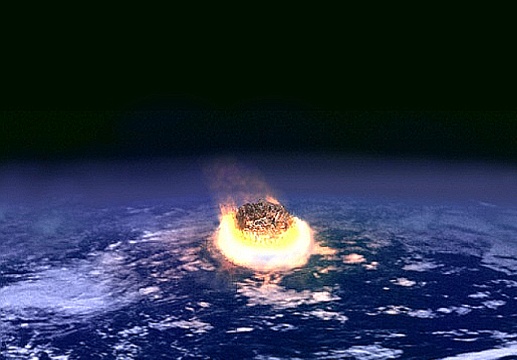Decadal Survey
September 21, 2010
Astronomy has changed incredibly over the past hundred years. Gone are the
lone investigators peering through eyepieces on frigid mountain tops. Astronomers now peer only at computer screens, either at images obtained by multi-megapixel cameras or graphs of spectra. Not only that, but many of these images and
spectrographs are obtained from satellites and spacecraft. Astronomers, themselves, have also changed. Forty years ago I attended an astronomy colloquium that was also attended by quite a few professors and their students. The presenter showed a photograph of a
constellation and asked whether anyone could identify it. I recognized that it was
Triangulum, but I didn't speak up since I was an interloper, a materials scientist at an astronomy colloquium. No one in the audience could name the constellation. Their universe was now cataloged according to
Right Ascension and
declination.
One thing that hasn't changed about astronomy is the cost of the instruments. The trend started early in the last century, first with the
100-inch Hooker reflector at
Mount Wilson, followed mid-century by the a
200-inch Hale reflector at
Palomar Observatory. If you're willing to consider single aperture
segmented mirror telescopes to be in the same league as these monsters, we're already at
410 inches.
That's just what's happening on the ground. The
Hubble Space Telescope, and its planned successor, the
James Webb Space Telescope, are rather expensive items. The James Webb Space Telescope is planned to cost $5 billion by the time it's finally launched. Astronomy has become "big science," very similar in structure to
high energy physics and its
particle accelerators. Particle accelerators used to be called "atom smashers." Now, they should be called "Budget Blasters."

Artist's impression of a large meteor impact on Earth (NASA).
Since money supply is limited, astronomers decided that they wanted to eliminate internal squabbles and set their own priorities, hoping that the
US Congress would follow their lead. Thus was born the
Astronomy and Astrophysics Decadal Survey, a prioritization of astronomy goals and needs that's done about every ten years under the auspices of the
National Research Council of the
US National Academy of Sciences. It seems to be working, in contrast with the
Superconducting Super Collider disaster that befell US high energy physics in 1993.
The latest survey was published in August, 2010,[1-4] and here are some pertinent highlights.
One comment about the survey is that infrared seems to be favored over other wavelengths, especially X-ray.[5] It will take quite a while for the International X-Ray Observatory to become operational, but there may be few X-ray astronomers left when that happens.
Scientific investigation, as demonstrated by the Decadal Survey, the
Large Hadron Collider and the
Human Genome Project, is now pursued more and more by large, international teams. This is a type of "industrial science" that differs greatly from the conduct of science just a hundred years ago. There's no question that such an approach is necessary when huge, expensive instruments are required for experiments. Students entering science should ask themselves very early in their studies whether they would be more comfortable as a bit player on a huge team, or an independent scientist, perhaps with a few collaborators. Fortunately, theorists rarely travel in pairs, no matter what the topic area. Two quotations seem to apply here:
"Thanks to the Interstate Highway System, it is now possible to travel from coast to coast without seeing anything." (Charles Kuralt)
"He who would travel happily must travel light." (Antoine de Saint-Exupéry)
Note added October 1, 2010 - Ray Norris describes how the practice of astronomy has changed in the following article:
Ray P. Norris, "Next-generation Astronomy," arXiv Preprint, September 30, 2010.
References:
- Molly Galvin, Sara Frueh and Christopher White, "Report Identifies Top Priorities for Astronomy and Astrophysics in the Coming Decade," US National Academies Press Release, Aug. 13, 2010
- Committee for a Decadal Survey of Astronomy and Astrophysics; National Research Council, "New Worlds, New Horizons in Astronomy and Astrophysics" (Decadal Survey Report).
- Committee for a Decadal Survey of Astronomy and Astrophysics; National Research Council, "New Worlds, New Horizons in Astronomy and Astrophysics" (Summary).
- Committee for a Decadal Survey of Astronomy and Astrophysics; National Research Council, "New Worlds, New Horizons in Astronomy and Astrophysics" (Report in Brief, PDF File).
- Julianne Dalcanton, Blogs / Cosmic Variance - "The Next 10 Years of Astronomy," August 13, 2010.
- Travel Quotations on The Quotations Page.
Permanent Link to this article
Linked Keywords: Astronomy; Clyde Tombaugh; spectrographs; constellation; Triangulum; Right Ascension; declination; 100-inch Hooker reflector; Mount Wilson; 200-inch Hale reflector; Palomar Observatory; segmented mirror; 410 inches; Hubble Space Telescope; James Webb Space Telescope; high energy physics; particle accelerators; large meteor impact; US Congress; Astronomy and Astrophysics Decadal Survey; National Research Council; US National Academy of Sciences; Superconducting Super Collider; Large Synoptic Survey Telescope; dark energy; impact event; Atmospheric Čerenkov Telescope Array; gamma ray; Wide-Field Infrared Survey Telescope; exosolar planets; galactic evolution; Explorer Program; Laser Interferometer Space Antenna; gravitational wave; General Relativity; International X-Ray Observatory; Large Hadron Collider; Human Genome Project; Charles Kuralt; Antoine de Saint-Exupéry.